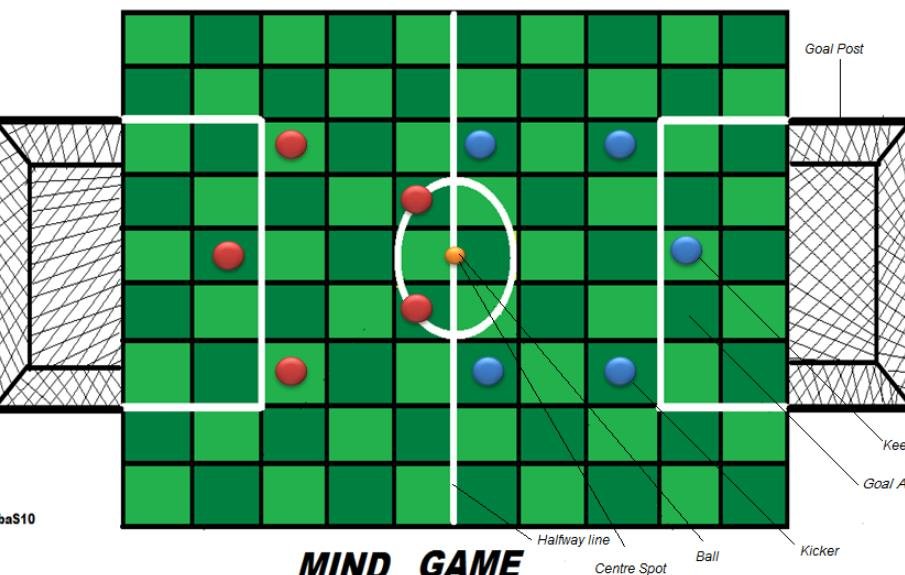In the final moments of the Paris Olympics, Steph Talbot showcased why some athletes seem perpetually one step ahead, turning anticipation into a game-winning move.
With less than 30 seconds left in the Australia-Belgium women’s basketball bronze medal game, tension was sky-high. Belgium trailed by three points, setting the stage for a dramatic finish. As the clock ticked down, Belgium advanced the ball to a player poised for what appeared to be an easy three-point shot to secure the tie.
But then, Steph Talbot, known for her sharp instincts, made a stunning block. The crowd held its breath as Talbot disrupted Belgium’s late surge, ensuring Australia clinched the bronze medal. When asked about her decisive play, Talbot shared her thought process:
“From the moment the ball was passed, in my mind, I knew I could get to her. And I knew I could block the shot. It was just something in my mind, I knew I could get it […] and I did.”
This moment raises a fascinating question: How do athletes like Talbot consistently anticipate and react with such precision under pressure?
The Science of Anticipation in Sports
Anticipation is often seen as a blend of innate talent and honed skill. Many believe it’s a gift that separates the greats from the good. Athletes with exceptional anticipation are frequently lauded for their “great instincts” and ability to “read the game.”
Research supports this view, showing that skilled athletes excel at:
- Observing Contextual Cues: They notice subtle changes in their opponents’ behavior.
- Recognizing Patterns: They identify recurring strategies and tactics.
- Filtering Sensory Information: They focus on what matters, ignoring distractions.
- Forecasting Outcomes: They predict future plays with remarkable accuracy.
However, these aspects only scratch the surface of what makes anticipation so effective in sports.

The Brain’s Predictive Power
Emerging evidence points to the brain’s predictive processes as a crucial component of athletic anticipation. Neuroscientist and psychologist Lisa Feldman Barrett emphasizes that in fast-paced sports, split-second predictions are essential. Without them, reacting in time to a fastball in baseball, a powerful serve in tennis, or a penalty shootout in soccer would be nearly impossible.
“In dynamic and fast-paced sporting contexts, the action happens so quickly that if athletes did not predict, they would not be able to hit a fastball in baseball, or return a booming first-serve in tennis, or save a goal in a soccer penalty shootout,” Barrett explains.
This predictive ability is a sophisticated interplay of experience, cognitive processing, and subconscious pattern recognition.
Training the Anticipatory Mind
Developing anticipation isn’t just about physical training; it involves mental conditioning as well. Coaches and sports psychologists focus on enhancing an athlete’s cognitive skills to improve their anticipatory performance.
Techniques to Boost Anticipation:
- Video Analysis: Reviewing game footage to identify and understand opponents’ strategies.
- Simulation Drills: Replicating game scenarios to practice quick decision-making.
- Mindfulness Training: Enhancing focus and reducing reaction times through mental exercises.
- Pattern Recognition Drills: Training the brain to spot and predict recurring plays.
These methods help athletes build a mental library of experiences, enabling quicker and more accurate predictions during actual games.
Real-World Examples: Anticipation in Action
Anticipation isn’t limited to basketball. It’s a critical skill across various sports, each showcasing it differently.
Soccer: The Invisible Assist
Players like Lionel Messi often appear to have a sixth sense, positioning themselves perfectly to receive the ball or create scoring opportunities without apparent effort. Their ability to read the game allows them to make split-second decisions that can change the course of a match.
Tennis: The Perfect Return
Top tennis players anticipate their opponents’ serves and volleys by studying their body language and previous patterns. This foresight enables them to position themselves optimally, returning serves with impressive speed and accuracy.
Baseball: The Pitcher’s Prediction
Pitchers like Clayton Kershaw use anticipation to outsmart batters. By varying their pitching patterns and reading the batter’s stance, they can predict and adjust their pitches to increase the chances of a strikeout.
The Role of Experience and Intuition
Experience plays a significant role in developing anticipation. Veteran athletes draw on countless hours of practice and game play to refine their predictive abilities. This accumulated knowledge allows them to make intuitive decisions that younger players might struggle with.
“Experience is the best teacher,” says Talbot. “Every game, every play adds to your understanding, making those split-second decisions feel almost second nature.”
The Future of Anticipation in Sports
As technology advances, the ways in which athletes train their anticipation skills continue to evolve. Virtual reality and AI-driven simulations are becoming integral in helping players visualize and prepare for various game scenarios.
Innovations Enhancing Anticipation:
- Virtual Reality Training: Creating immersive environments for athletes to practice anticipating plays without physical exertion.
- AI Analytics: Using data to predict opponents’ strategies and prepare accordingly.
- Neurofeedback: Monitoring brain activity to optimize focus and reaction times.
These tools offer new avenues for athletes to enhance their anticipatory skills, potentially leading to even greater performances on the field.
Psychological Factors: Staying Calm Under Pressure
Anticipation isn’t just a mental exercise; it’s also about managing emotions and maintaining composure. Athletes who can stay calm and focused under pressure are better equipped to anticipate and react effectively.
Strategies for Maintaining Composure:
- Breathing Techniques: Helping to control nerves and maintain focus.
- Positive Visualization: Envisioning successful plays to build confidence.
- Routine Building: Establishing pre-game rituals to create a sense of stability and readiness.
These psychological strategies complement physical and cognitive training, creating a well-rounded approach to enhancing anticipation.








